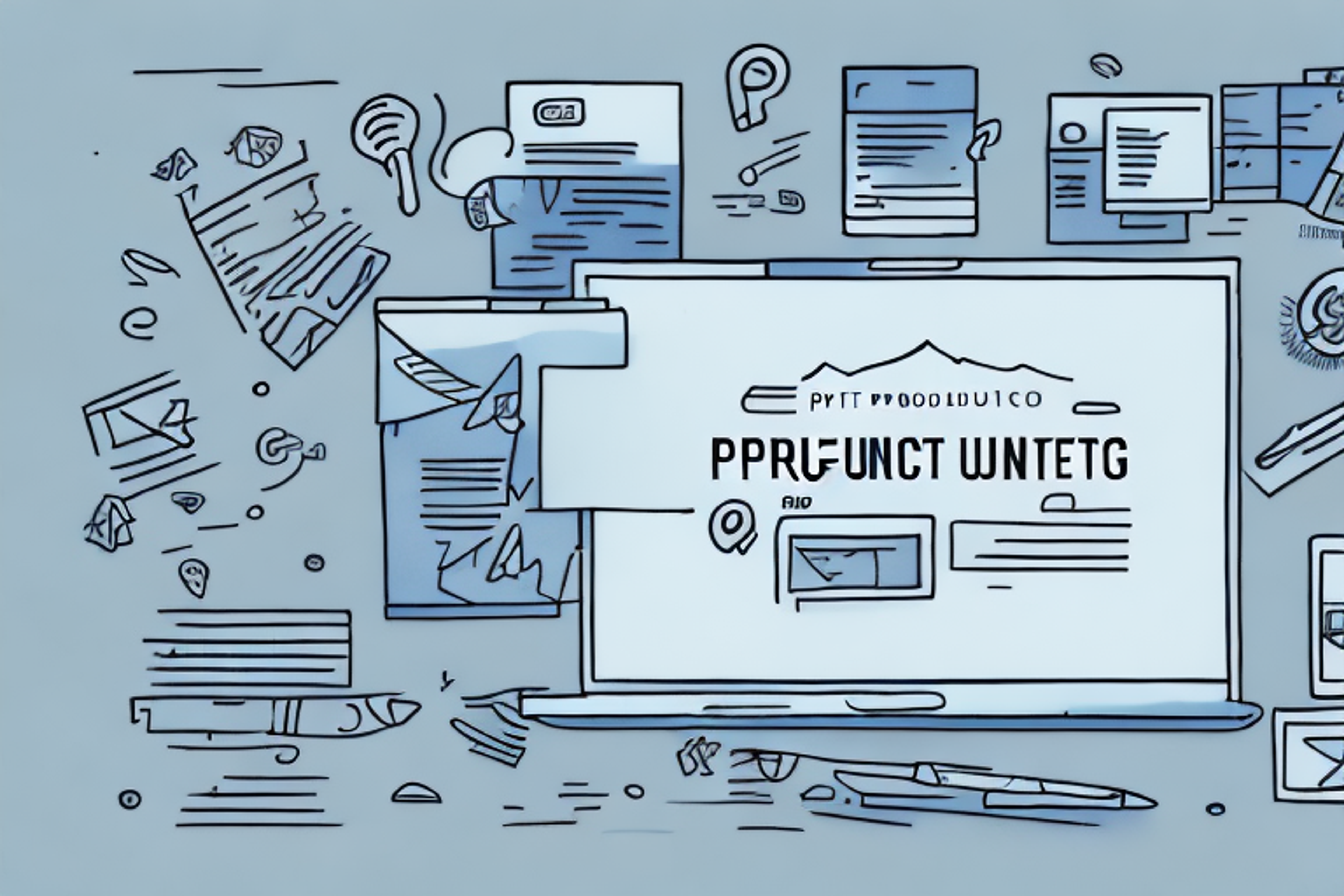Measuring Success: Product Management Metrics and KPIs to Track
Learn how to measure the success of your product management strategies with our comprehensive guide on metrics and KPIs to track.
Posted May 15, 2023

Table of Contents
Product management is a critical part of any business, and tracking your progress is essential to success. Metrics and Key Performance Indicators (KPIs) are the best tools available to measure success and make data-driven decisions. In this article, we'll explore why metrics and KPIs are so critical to product management success, the types of product management metrics and KPIs that matter, how to define your product management metrics and KPIs for success, and much more.
Why Metrics and KPIs are Critical to Product Management Success
Metrics and KPIs are essential to product management success for several reasons. First, they allow you to measure and track progress toward your goals. Without measuring progress, it can be challenging to stay on course and make informed decisions about where to focus your resources.
Second, metrics and KPIs help you identify problems or issues that need attention. By monitoring specific metrics, you can quickly identify trends or patterns that indicate potential problems and address them before they become more significant issues.
Finally, metrics and KPIs help you communicate progress and goals to internal stakeholders and external partners. By providing clear and concise data, you can build trust and credibility with others and ensure everyone is aligned towards the same goals.
Another reason why metrics and KPIs are critical to product management success is that they help you make data-driven decisions. By analyzing the data collected through metrics and KPIs, you can identify areas where you need to improve and make informed decisions about how to allocate resources to achieve your goals.
Additionally, metrics and KPIs can help you prioritize your product roadmap. By understanding which features or products are performing well and which ones are not, you can make informed decisions about which projects to prioritize and which ones to deprioritize.
The Different Types of Product Management Metrics and KPIs that Matter
There are several different types of product management metrics and KPIs that matter, depending on your business goals and objectives. Here are some of the most critical types of metrics and KPIs to track:
- Customer satisfaction and retention rates
- Product development team performance metrics
- Market fit and competitive positioning metrics
- User engagement and behavior analytics
- Revenue, profitability, and ROI
Another important type of product management metric to track is the time-to-market for new products or features. This metric measures the amount of time it takes for a product or feature to go from ideation to launch. A shorter time-to-market can give your business a competitive advantage and increase revenue.
Additionally, tracking customer acquisition cost (CAC) and customer lifetime value (CLV) can help you understand the effectiveness of your marketing and sales efforts. CAC measures the cost of acquiring a new customer, while CLV measures the total value a customer brings to your business over their lifetime. By comparing these two metrics, you can determine if your marketing and sales efforts are generating a positive return on investment.
How to Define Your Product Management Metrics and KPIs for Success
Defining your product management metrics and KPIs is critical to achieving success. The first step is to define your business goals and objectives. Once you've articulated your goals, you can identify the key metrics and KPIs that align with those goals. It's important to choose metrics that are specific, measurable, relevant, achievable, and time-bound (SMART).
Once you've identified your metrics and KPIs, it's essential to establish baseline data and set targets. Baseline data provides a starting point for tracking progress, while targets help you identify what success looks like and measure progress toward your goals.
Another important aspect of defining your product management metrics and KPIs is to regularly review and adjust them as needed. As your business evolves and your goals change, your metrics and KPIs may need to be updated to ensure they remain relevant and aligned with your objectives. It's also important to communicate your metrics and KPIs to your team and stakeholders, so everyone is aligned and working towards the same goals.
Key Performance Indicators (KPIs) that Measure Customer Satisfaction and Retention
Tracking customer satisfaction and retention is a critical component of product management success. Here are some of the most important KPIs to track in this area:
- Customer satisfaction score (CSAT)
- Net promoter score (NPS)
- Customer retention rate
- Churn rate
By tracking these KPIs, you can quickly identify areas for improvement and make targeted changes to your product or service to improve customer satisfaction and retention.
One of the most effective ways to improve customer satisfaction and retention is by providing excellent customer service. This can be measured by tracking metrics such as average response time, first contact resolution rate, and customer effort score. By monitoring these metrics, you can ensure that your customer service team is providing timely and effective support to your customers.
In addition to tracking KPIs related to customer satisfaction and retention, it's also important to gather feedback directly from your customers. This can be done through surveys, focus groups, or other forms of customer research. By listening to your customers and incorporating their feedback into your product or service, you can improve customer satisfaction and retention over the long term.
Metrics that Track the Performance of Your Product Development Team
Your product development team is critical to your success as a product manager, and tracking their performance is essential. Here are some of the most important metrics to track in this area:
- Time to market
- Development velocity
- Bug backlog size and resolution time
- Team capacity and utilization
By tracking these metrics, you can identify areas for improvement and optimize your product development process for maximum efficiency and effectiveness.
Another important metric to track is customer satisfaction. This can be measured through surveys or feedback forms, and can provide valuable insights into how well your product development team is meeting the needs and expectations of your customers.
In addition, it's important to track the quality of the products being developed. This can be measured through metrics such as defect density, which calculates the number of defects per unit of code. By tracking this metric, you can ensure that your product development team is producing high-quality products that meet the needs of your customers.
Key Metrics to Monitor Your Product's Market Fit and Competitive Positioning
Monitoring your product's market fit and competitive positioning is critical to success in today's business environment. Here are some of the most important metrics to track in this area:
- Market share
- Competitive analysis
- Product differentiation
- Market penetration
By tracking these metrics, you can gain insight into how your product stacks up against the competition and identify opportunities to improve your market position.
It's important to note that these metrics should not be viewed in isolation. For example, a high market share may not necessarily indicate a strong competitive position if the market is small or stagnant. Similarly, a low market penetration rate may not be a cause for concern if the product is new and has yet to gain traction. Therefore, it's important to consider these metrics in conjunction with other factors such as industry trends, customer feedback, and product innovation.
Using Analytics to Measure User Engagement and Behavior with Your Product
Understanding how users engage with your product is critical to success as a product manager. Here are some of the most important metrics to track in this area:
- Conversion rate
- Retention rate
- Time spent on site or in app
- Number of visits or sessions
By tracking these metrics, you can gain insights into how users are interacting with your product and make targeted changes to improve user engagement and satisfaction.
Another important metric to track is the bounce rate. This measures the percentage of users who leave your website or app after only viewing one page. A high bounce rate can indicate that users are not finding what they are looking for or that your website or app is difficult to navigate. By analyzing the bounce rate, you can identify areas for improvement and make changes to keep users engaged and on your site or app for longer periods of time.
Tracking Revenue, Profitability, and ROI with Product Management Metrics
Revenue, profitability, and ROI are critical metrics for measuring product management success. Here are some of the most important metrics to track in this area:
- Revenue growth rate
- Gross profit margin
- Return on investment (ROI)
- Customer lifetime value (CLTV)
By tracking these metrics, you can gain insight into the financial performance of your product and make informed decisions about resource allocation and investment.
Tips for Creating Actionable Reports that Help You Make Informed Business Decisions
Creating actionable reports is essential to product management success. Here are some tips to help you create reports that drive informed business decisions:
- Focus on the most critical metrics and KPIs
- Use data visualization to make reports more accessible and engaging
- Provide context and insights to help stakeholders understand the data
- Regularly update and review reports to ensure relevance and accuracy
By following these tips, you can create actionable reports that help you make informed business decisions and drive your product management success.
Conclusion
Product management is a critical function in any business, and tracking progress is essential to success. By using metrics and KPIs, you can measure progress, identify problems, and communicate goals to stakeholders. By tracking the right metrics and KPIs and creating actionable reports, you can quickly identify areas for improvement, optimize your product development process, and drive product management success.



















